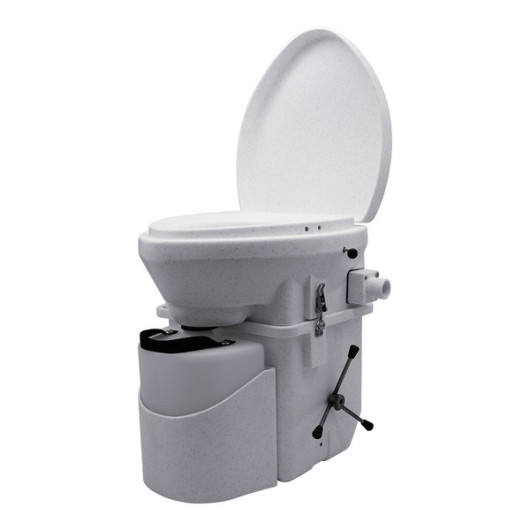Blog
The different types of dry toilets

Whether you’re an individual or a professional, you’re fully committed to an ecological approach, want to become more self-sufficient or rent an eco-responsible home away from home?
The choice of toilets is not to be neglected, especially for a nomadic dwelling such as a Tiny House, and must be well thought out according to your comfort needs and the configuration of your dwelling.
Often prejudiced, yet more hygienic than conventional toilets, dry toilets are a solution for limiting our environmental impact and avoiding wastage of drinking water.
And with good reason. Did you know that just by flushing the toilet, the French flush almost 40% of their drinking water down the drain every day?
Just think: 36 liters of water wasted per person per day through the toilet alone! Clearly, that’s 1/3 of the water consumed by French households going down the toilet.
And the problem doesn’t stop there. Toilet wastewater (known as “black water”) is laden with pathogens and numerous mineral, organic and even synthetic pollutants such as pesticides and medicines, which complicates the work of wastewater treatment plants and risks ending up in our waterways.
So in this article, we explain the different dry toilet systems that exist to help you choose according to your means and your need for comfort.
Composting dry toilets

People are often introduced to dry toilets at public events. And where there’s a lot of people, there’s a lack of cleanliness… So dry toilets inevitably fall victim to this cliché.
And here we say Stop! There’s no reason why a private dry toilet should be dirtier than a conventional one, since it really depends on how well you look after it… So yes, you can be green and clean, one doesn’t preclude the other! Once this truth has been re-established, it’s worth pointing out that dry toilets even have a number of advantages.
Ecological and economical – as their name suggests, they consume no water – dry toilets are also extremely easy to install and just as comfortable for your little bottom as a conventional toilet. What’s more, there’s no risk of breakdown or clogging, no toilet products to buy and no septic tank to maintain!
So, in concrete terms, how are things going at the little dry spot? Well, it goes well. After each use, you cover your little need with sawdust or wood shavings… It’s the sawdust that will absorb the humidity and thus prevent fermentation and odors.
In terms of logistics, all you need to do is stock up on sawdust and empty the contents of the bucket into the garden compost heap every 2/3 days (for a family of 3/4 people). To best prepare the dry toilet bucket, wet it a little with water before installing it, then cover the sides + bottom with 5 to 10 cm of sawdust.
Installing a composting dry toilet takes no more than half a day, as there are no water connections to make. You can even save space by integrating a compartment dedicated to wood shavings into the toilet extension. And a little tip for greater comfort and discretion: for emptying, provide access to the bucket from outside via a small trapdoor, so you don’t have to walk around the house with it, even if it’s as small as a Tiny House…
Separating dry toilets


We’re moving up in the dry toilet family. This is a more sophisticated system than the simple compost bin described above.
Thanks to a separator positioned under the toilet seat, liquid and solid waste can be separated.
Urine is collected in a container at the front of the toilet, and faeces in another at the back.
What for?
To avoid odors in the first place, by preventing liquid and solid waste from mixing. And with the option of adding an external ventilation system to some models, odors are directly eliminated and sawdust litter is virtually unnecessary.
Dry toilets with a separator also enable you to sort solid matter into a compostable bag that goes straight into your garden compost bin, and liquids that can be discharged via grey water or used as fertilizer for your plants! Finally, for even greater convenience, some will appreciate the fact that the bucket is emptied less frequently, since the urine container is easier to empty.
Evaporation and dehydration dry toilets

Credit: toilitech.fr
They’re the Rolls Royce of dry toilets. Although more complex to install and more expensive to buy than other systems, evaporation and dehydration dry toilets are a guarantee of total comfort.
Not only do they eliminate the need to handle sawdust, reducing waste volumes by 90%, they also make emptying considerably easier and less time-consuming.
There are different types of installation possible. Some, for example, use only air and the sun, while others are connected to electricity.
Now it’s up to you to make the choice for a greener toilet! See also our special article PHYTOEPURATION.